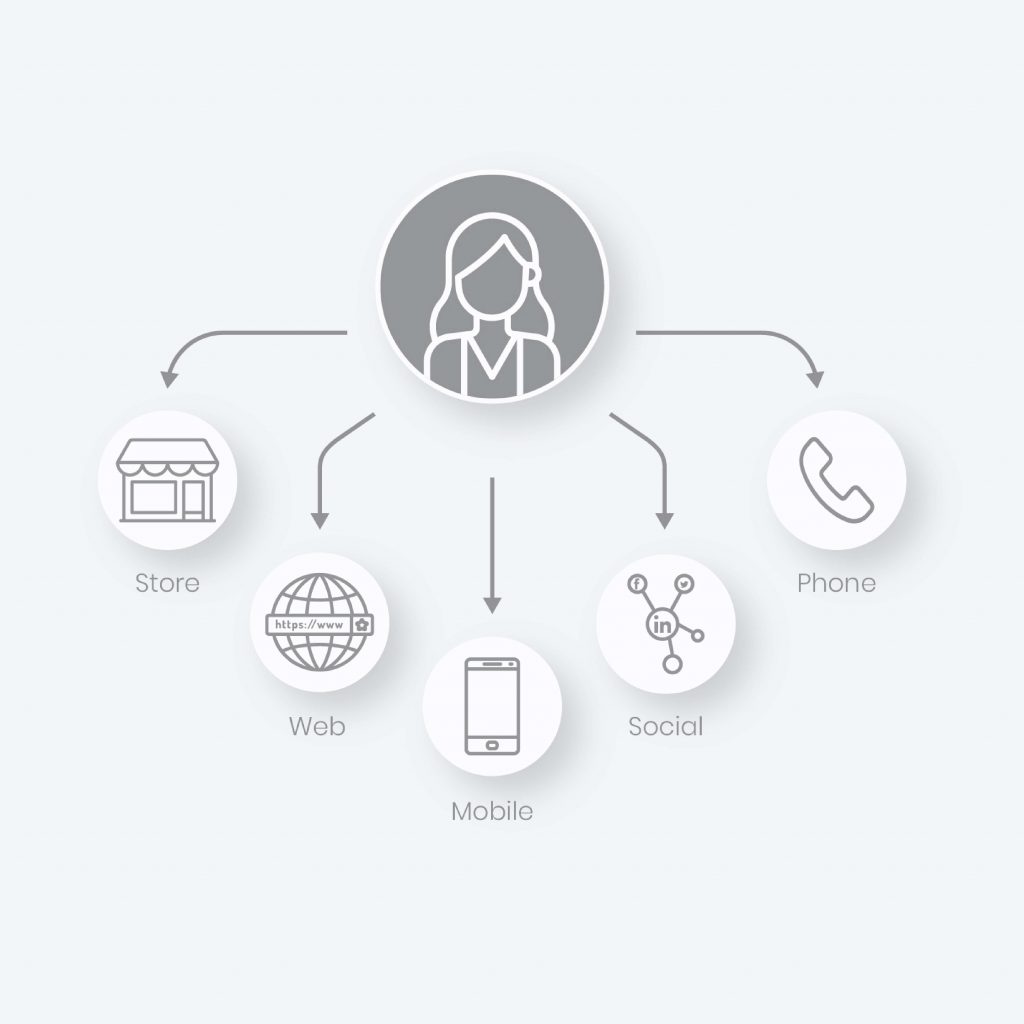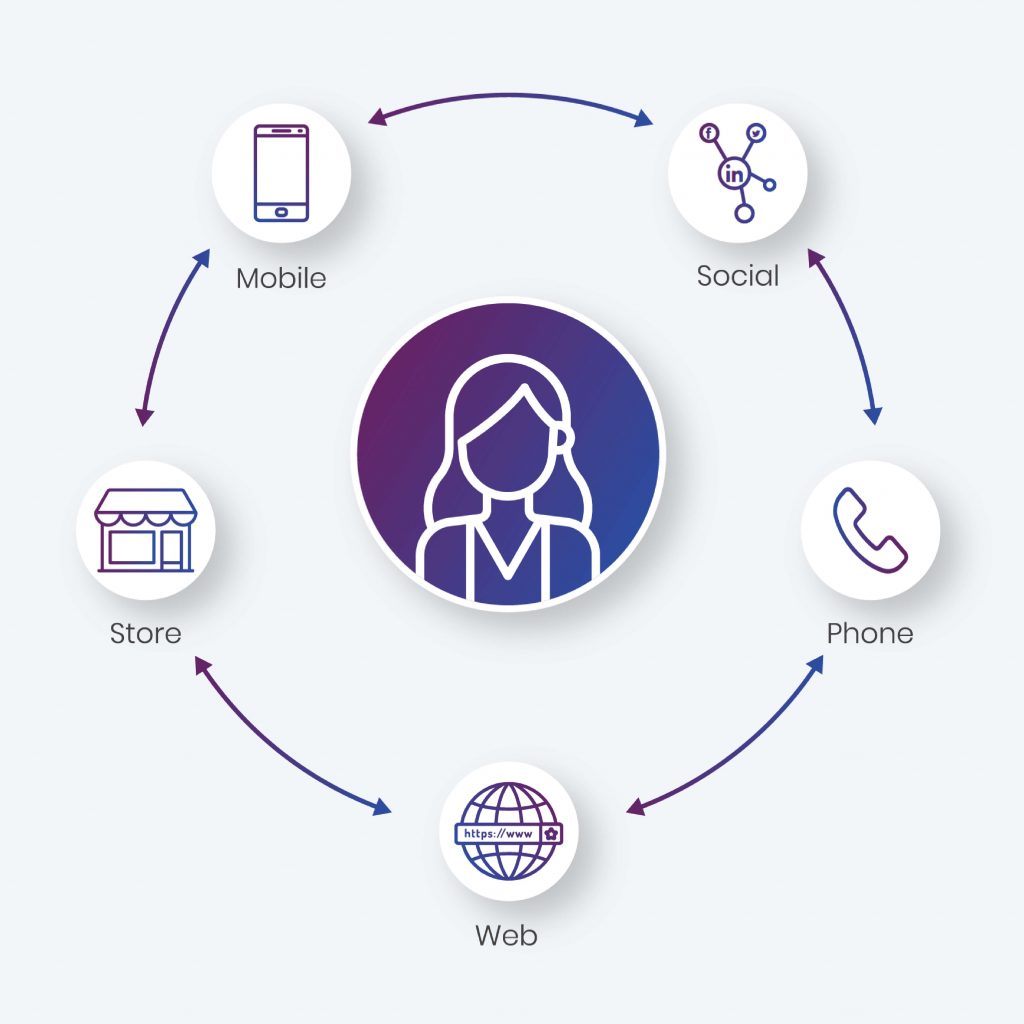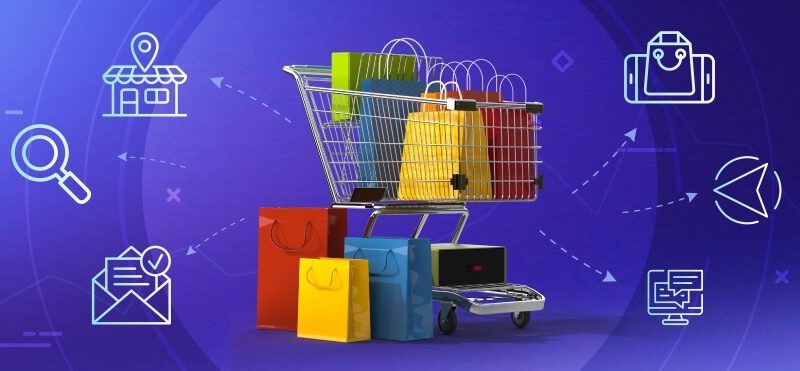In the past few years, we’ve seen small businesses massively moving online. Social media has hugely contributed to this trend. Millions of companies have long and successfully used them as a means for marketing, brand recognition, and communication with customers. By providing businesses with easy-to-use and affordable e-commerce tools, it has helped establish online sales quickly and without additional investments. Thus, the influence of social media, which has long become an integral part of our daily life, has increased many times over. Actually, it’s just what Gary Vaynerchuk spoke about in one of his interviews, calling social media the new state of the internet. However, it has also created a kind of platform dependency for those businesses that relied on social media as their only source of online sales.
I’ll risk playing Captain Obvious and say that diversifying sales channels can be a perfect answer to this challenge. And basically, there are two strategies that can be of great help here – multichannel and omnichannel retailing. Let’s take a closer look at what an omnichannel strategy is, how it can help prevent platform dependency risks, and how to make the most of it.
Contents:
1. What is multichannel retail: Different bags for your eggs
2. What is omnichannel retail: The power of integration
3. Omnichannel retail strategy: How to win at omnichannel retail
4. Omnichannel trends for 2023
What is multichannel retail: Different bags for your eggs
Now, there’ll be a little digression from multichannel retail if you don’t mind, as I want to talk about… eggs and baskets.
You might have heard it many times and on many pretexts: don’t put all eggs in one basket. I really like the expression, as it perfectly applies to the case of businesses with a single storefront.
And here your natural reaction can be like: wait a minute! How is it connected with multichannel retail? Didn’t we already diversify when we went online in addition to our brick-and-mortar store? And now, you say, it’s not enough.
Okay, you’re right.
And you’re not quite right.
The pandemic made you—just like many other small businesses—face an urgent need to reach your customers in a different way, other than in-person sales. It became a matter of survival even for some big brands, not speaking about small retailers. Whether you used Facebook Shops or any other e-commerce platform, that was a brilliant way out.
But speaking in medical terms, that was a treatment for a symptom, not a remedy for the disease. What actually happened is that you just brought sales from a place that stopped working for you to another one, which was a salvation in that particular moment. But the problem of sticking to one channel remained pretty much the same, though under disguise. Back to the eggs and baskets example, we took all our eggs from the old basket and put them into a new one. So, after all the energy and resources invested into going online, you seem to end up with one basket and all the potential risks that come with it, again. Naturally, you need plan B. Here comes the multichannel retail solution. Understanding the difference between SKU vs UPC is crucial for retailers as they expand their sales channels, ensuring accurate tracking and management across diverse platforms.
What if we take several baskets, fill them with eggs, and go to meet our customers everywhere where they can be? And in case one basket drops, you still have plenty of eggs to sell. Simply put, that’s how multichannel retail works.

Diving into more detail, multichannel retailing is a business strategy that involves selling your products (or services) through multiple channels, including online and offline. For example, you can sell through your brick-and-mortar and online stores, your business pages on Facebook and Instagram, and various marketplaces, such as Amazon, eBay, or Etsy. In addition, you can promote your special offers via email with an option to pay directly from inside the email. The understanding of multichannel retailing is pretty clear so far.
And now it looks more like a success plan. Here are some reasons why trying out multichannel retailing is worth it.
Multichannel retailing reason #1. No platform dependency
How nice it’d be to have something to cover your back in case your sales channel gets out of reach. It’s kind of leaving a bad taste in the mouth as sales are lost when the platform faces some problems (like it was with Facebook, when sellers lost their sales just because the platform went down) and some of the customers might never come back. So pretty obviously, in multichannel retail, the risk of losing customers due to the service downtimes is eliminated.
Multichannel retailing reason #2. More engagement
Here’s another thing to consider. People very rarely buy instantly, without any research, when shopping online. They usually visit a plethora of places during their journey to purchase: from small online shops and Amazon stores to Instagram shoppable posts, product videos on Youtube, or even TikTok. Boom! Multichannel retailing. How likely is it that you reach them if your company or dropshipping business is represented in only one of these places? It’s like a big tasty, juicy pie of which you get only a tiny, minuscule piece with your only store (and it hurts).
Multichannel retailing allows you to offer your customers various touchpoints to purchase your products or services and to engage with multiple audiences through several sales channels, thus widening overall brand awareness and reach.
Multichannel retailing reason #3. More sales
This is pure math. Multichannel retailing gives you the possibility to grab more attention from your potential customers, meeting them at different stages of their journey. Moreover, you can profit from the power of marketplaces to have better visibility in search results. All these possibilities combined are more than likely to boost your sales.
The peculiarity of multichannel retail is that each channel works as a separate business. It may target a different audience and offer a different customer experience. Moreover, the stock may also vary from channel to channel.
However, this separation is also a big drawback of multichannel retailing. Having your sales channels siloed drastically complicates your business operation, which can include the management of separate inventories, customer bases, payment systems, and more.
From the customers’ point of view, their experience isn’t unified across channels. What does that mean? It’s great that they can find you online and buy the product they like from you or learn where your physical store is to go and buy there. However, situations may occur when a customer comes to your store only to find that the product they wish to purchase is only available online. And that’s not the only downside of multichannel retailing.
Another example: a customer doesn’t want to wait for the delivery and would love to pick up their purchase in-store. And if you don’t offer such a possibility with your multichannel retailing strategy, a customer may leave disappointed and never return.
Today, customers expect a smoother experience across all channels and various devices. So it’s logical to answer their needs correspondingly. And that’s what omnichannel e-commerce does.
What is omnichannel retail: The power of integration
These aren’t just some buzzwords – give me a couple of minutes, and we’ll get to the point.
At first glance, multichannel and omnichannel retail have a lot in common. No wonder that people often confuse them or believe them to be the same thing. However, there’s a difference.
What’s omnichannel retailing?
Omnichannel retail is a more customer-centric strategy that’s based on transacting across multiple channels. It aims at providing a smoother, more consistent cross-channel (and cross-device) customer experience using integrated data from all the channels. Thus, the core attribute of omnichannel retail is integration. The omnichannel strategy helps ensure that your customers have consistent product information, can control their purchase orders, or have the same level of service across all your channels. Moreover, having a good omnichannel strategy and consolidated data from all your sales channels can provide you with invaluable means for enhancing your acquisition and digital customer engagement and facilitating your business operations in the face of an increased number of sales channels.
So how does omnichannel retailing actually work?

Here’s an example of customer experience with omnichannel retailing. A customer finds a product on your e-commerce store, and then they can get to your website to see more details about it. You lead them directly to the product page (so that they won’t need to look for the product they liked again), or delivery page to find out about your delivery or pick-up options. This looks like a great omnichannel strategy! The customers can also make an order online and then go to your physical store to pick it up, as they happen to be nearby, and a shop assistant can immediately find the order in the database and prepare it for pick-up. Moreover, with omnichannel retailing, you can keep this very customer’s purchasing history from all the channels so you can offer them similar or supplementing products or promote new arrivals and discounts.
Now let’s look at some of the biggest benefits of omnichannel retail for a business.
Omnichannel retail strategy ensures a higher level of customer satisfaction
With the omnichannel retail solution, you can offer customers the experience that they expect, which can pay off positively. The freedom to choose and convenience in how they want to buy from you helps you gain more customer loyalty, improve customer retention, and as a result, get more sales. Omnichannel retail consumers have long proven to have a 30% higher lifetime value than those that buy from a single channel.
Omnichannel retailing provides a comprehensive view of your sales
Without an effective omnichannel retailing strategy, when your sales channels are in silos, you might be getting the wrong data on your customers and sales. It can result in not just missing revenue opportunities but also significant losses. Meanwhile, an integrated view of your sales data—which is essential in the omnichannel retail strategy—gives you a more accurate picture of your sales, the efficiency of sales channels, the demand, and more. And making your business decisions based on the real view of your sales can help timely tweak your tactics to answer customer needs and manage your sales more efficiently.
Omnichannel retailing facilitates inventory management
Poor inventory management is one of the reasons for inventory distortion. Simply put, it means having corrupt data about your inventory. According to the IHL report, it accounts for $1.1 trillion of lost revenue opportunities annually worldwide. The omnichannel retail solution will be useful even here. Putting together all your inventory data helps to get better, more realistic figures of what you have in or out of stock and react correspondingly. This omnichannel retail strategy includes preventing shortages or overstocking, avoiding extra expenses, predicting demand, and offering better shipping options to your customers.
Omnichannel retail strategy: How to win at omnichannel retail
So you see, when set up the right way, omnichannel e-commerce can be a win-win for you and your customers. As a special treat, here are some helpful tips and tricks for winning at omnichannel retail.
Omnichannel retailers tip #1. No rush, more research
No matter how tempting it’s to embrace everything and become the omniest at once, don’t forget that omnichannel retail isn’t a cheap thing. An increase in spending is still inevitable with the addition of each new channel. It’s better to make your omnichannel retail customer strategy a long-distance run rather than a sprint and start with some three-four sales channels. You’ll also need to carefully choose where you go and invest some time into research. Thus, you’ll ensure that using the omnichannel retail strategy you focus on those channels where your customers (and customers-to-be) spend more time. In addition, based on the user behavior typical for those channels, you’ll be able to provide customers with the experience that they expect.
Omnichannel retailers tip #2. Segment your customers
Customers aren’t all the same. Every customer has different needs, interests, and buying habits. Understanding your customers on a deeper level is critical if you want to create tailored experiences and drive loyalty. To get started with segmenting your customers, you need to identify key factors that make a customer unique. For example, do they live in a specific region, buy specific products or services, or have some other commonality? The more granular you can make your segments, the better you’ll be able to serve those customers.
If you’ve been in the field for some time and have a number of customers and sales, then all you need to do is to take advantage of a software that’ll do all the calculations for you. Such a tool as Synder Insights can give you an overview of your business in the form of statistics. It provides the users with the information about:
- New vs Returning customers;
- Returning customer rate;
- Top performing customers;
- Top performing products;
- Products most purchased together.
Omnichannel retailers tip #3. Make purchasing fast and convenient cross-channel (and cross-device)
So a customer decided to buy from you. Hurray? Not yet. Even with the omnichannel retail strategy you still can lose people at the final step. It’s the sad truth, but the rate of cart abandonment for online shopping in the US is more than 60% for desktop buyers and up to 80% for mobile. At least six out of your ten customers will turn their backs at the checkout.
To avoid shopping cart abandonment, you need to make the checkout process as convenient as possible across all your channels and devices that your customers might use to fulfill their purchasing. Be it on your Facebook page, an online store, or within an email promo, try to create an omnichannel retail strategy yourself and offer customers the same choice of payment options. And ensure you include the most popular payment options in your omnichannel strategies.
Omnichannel retailers tip #4. Automate your integrations
Omnichannel retail is impossible without integrating all your business data into a single system. Be it inventory, payments, customer data – having a full picture and the ability to access the needed data on any of your touchpoints is an immense help in providing a smooth cross-channel experience to your customers and making life easier for you as a business with effective omnichannel retail strategies.
Needless to say that you don’t have to do it manually, as today plenty of solutions help automate data integration. Moreover, the most popular CRMs, inventory management, payment, or accounting systems can link together to help you integrate all the necessary data into a single system and ease your omnichannel retailing experience. All you need is to choose the ones that will create your perfect stack. Automating data integration will help ensure data accuracy, prevent data loss, and, which is quite obvious, save loads of your time. So you can make full use of your integrated data to improve your sales, customer experience, inventory, supply chain, or management of your finances. And now you can use your omnichannel retail strategy to the utmost!
Take a look at accounting programs for small business
Omnichannel trends for 2023
To get some inspiration for the trends in 2023, it may be a good idea to look through the trends from the previous years and see the repetitive patterns. Here are some ideas for your omnichannel retail trends that might be effective for your business in 2023!
Brick-and-mortar locations for the store
It may sound a bit strange after everything that’s happened in the world, but still, very much logically, people want to have an option to go to physical stores. Humans rely on their instincts and feelings, however, looking at the screen with virtual colors on it doesn’t make them feel. In-person shopping gives the possibilities to touch, feel and try the products before actually buying them. And if it still sounds a bit strange, here’s actual statistics about the coming back to the good old shopping experience at physical stores to create fulfilling store experiences:
- As of 2022, e-commerce constitutes 13% of total retail sales in the U.S., while physical stores still account for 87% of sales.
- 76% of people prefer to go to a physical store for holiday shopping (say hi to the Holiday season, folks!).
- As of 2022, 94% of consumers have returned to shopping at physical stores.
Combination of traditional and innovative shopping for omnichannel customer experience
With these evolving shopper expectations in mind, retailers must combine traditional shopping experiences with new technology to make omnichannel customer experience better. Here are some ways that can take your retail business from good to great with the help of omnichannel strategy:
- Buy online, pickup in-store – today’s digital consumers are constantly connected and always on the lookout for new ways to make their lives easier. That’s why in-store pickup is one of the fastest growing e-commerce trends. For many, the ability to order products online and pick them up at a local store is a game changer. This hybrid service allows customers to get what they want when they want it without having to make two separate trips or wait days for their package to arrive.
- Buy in-store, ship to home – the shipping process can be a logistical nightmare, especially if you have to keep track of shipments and manage everything by yourself. Many online shoppers would like to have the option of buying items from a store and having them shipped to their home. With this strategy, customers can browse products in a store and then purchase them online, shipping them to their home instead of back to the store.
- Buy online, return in-store – many brick-and-mortar retailers are making their return policies much friendlier. This means you don’t have to stress about trying something on at home or risk sending it back to the wrong place. Instead, once you’ve confirmed your new purchase doesn’t fit, simply take it back to the same store where you bought it and they’ll process the return for you at no extra cost.
Marketing strategy to the people
Create a sales strategy that focuses on offering a consistent customer experience. Provide personalized offers when it’s a good time: whether it’s a particular holiday or just a new season. As it was said before, you need to segment your customers to know them better and to know how to create the right marketing flows. But just knowing who your audience is won’t have a huge impact – you need to create a good marketing strategy based on the information you have from this segmentation.
The customer journey is a continuous process. People don’t just buy and leave, but they might return or have other interactions with your brand in the future. Understanding customer behavior at every stage of the journey is the key to optimally designing the experience for each individual customer segment. It also helps you target the right customers with the right marketing message at the right time.
Integrate social media: Selling through the video content
When you think of e-commerce, you probably picture a website where customers can buy products online. But in today’s digital world, e-commerce also takes many other forms. An increasing number of brands integrate social media and are using video content to sell their products directly to consumers, rather than through third parties such as e-commerce websites and retail stores.
Social media sites such as YouTube and Instagram have become an important source of direct-to-consumer (DTC) marketing for brands in almost every industry. As more consumers get used to watching videos on the internet and on mobile devices, this trend is only going to grow even stronger.
Video marketing takes many forms, from simple product videos that describe the benefits and features of your products to how-to videos that show users how to use them and explain the features in detail. Using video content can be a great marketing strategy as it has the ability to catch attention fast. People are also more likely to watch these videos rather than read an article or a pamphlet.
A wrap-up: Omnichannel retail experience
The shift in customer behavior to more online purchasing has occurred and—pandemic or not—it’s going to stay not as a trend but a new status quo in sales. djusting business models to this evolution is critical, and retail accounting plays a significant role in this transition. Thus, e-commerce will only be evolving, and small retailers will have to adjust their business models to this evolution. Today, omnichannel retail seems to be the optimal way to adjust to the changing landscape. The omnichannel retail strategy helps you become less dependent on the platforms and services that you rely on for sales and prevent the risk of losing customers or revenue due to platform outages. It also offers customers a great experience while purchasing across your sales channels.

.png)






Omnichannel is the way forward to expanding sales channels. We use it for social media sales and web site sales would be great if more sales channels could be integrated this way.
Thanks for commenting, Alison. Yes, today, there are plenty of sales channels a business can profit from — there’s Amazon and eBay that work great for e-commerce, for instance, and more.
Thank you for nice article.